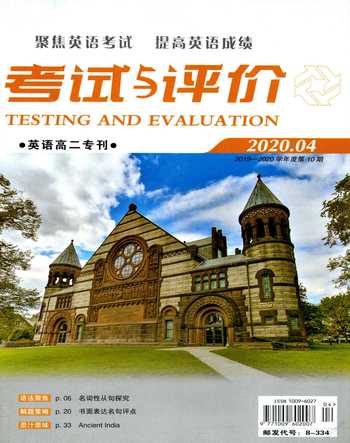Taj Mahal
周旭
Shah Jahan was a ruling emperor of a large portion of northern India in the early 1600s. In 1612 he married, as one of his three wives, Arjumand Banu Begum. She was called Mumtaz Mahal, which means “Chosen one of the Palace”. She was the emperors favorite wife.
She died in 1631, after giving birth to her 14th child. Shah Jahan had built several large structures already in India. He grieved for his wife and decided to build a giant tomb or mausoleum (陵墓) in her memory. He wanted it to be across the Yamuna River from his palace in Agra.
Although the mausoleum was begun in 1632, it was not finished for about 20 years. The architect is thought to have been Ustad Ahmad Lahouri. 20,000 workers from India, Persia, Europe and the Ottoman Empire were employed. In addition, 1000 elephants were used for carrying and dragging the huge pieces of stone and marble (大理石). The cost was measured in rupees and today would equal about 827 million dollars.
The Taj Mahal means “crown of the palace” and was named in honor of Shah Jahans wife. It covers 42 acres. It is made of white marble and semi-precious stones, like jade, crystal and turquoise. The jewels were made into complicated designs. A central dome which reached 240 feet was surrounded by four smaller domes. Four thin columns called minarets were at each of the four corners of the base or platform upon which the building stood. These were “working” towers where muezzin (priests) four times a day called out people for prayer.
Verses from the Quran, the Islamic holy book, were inscribed (刻) over the arched entrances. They were also inscribed in other places in the whole complex. The calligraphy, or writing, was done by Abdul Haq. Inside the mausoleum is an eight-sided room. It is decorated with jewels. In this room was the cenotaph (纪念碑) or false coffin of Mumtaz Mahal. Her real coffin or sarcophagus where her body lies is below.
In the complex were other structures. A main gateway of red sandstone and a garden cut into four sections by pools of water were constructed also. A red sandstone mosque (place of worship) was built along with a jawab or mirror image of the mosque opposite it. The Mughal dynasty of which Shah Jahan was a part commanded that no future alterations (變更) could be made.
It is told that Shah Jahan intended to build another mausoleum for himself connected by a bridge to that of his wife. However, in 1658, the 3rd son of Mumtaz Mahal overthrew his father who was sick and took over. Shah Jahan spent the final years of his life under close supervision, or house arrest. He lived at the Red Fort in Agra in a tower. He died in 1665 and was buried next to his wife.
In the 200 years after Shah Jahans death, the Taj Mahal slowly fell into disrepair because no one took care of the buildings. In the late 1800s, when Great Britain ruled over India,Lord Curzon who was the viceroy or governor of India wanted to preserve Indias heritage. He ordered that the mausoleum complex be restored.
About 3 million visitors come to see the Taj Mahal each year. Unfortunately, pollution from automobiles and factories is discoloring the white marble. However, in 1998, the Supreme Court of India passed some anti-pollution laws. They prevented automobiles from driving in the close neighborhood of the complex. They also closed nearby factories.

